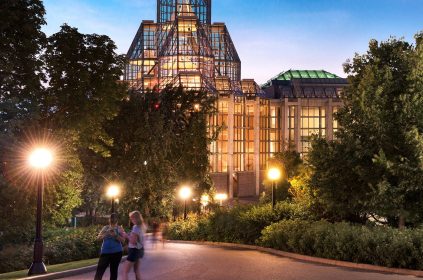In The News is a roundup of stories from The Canadian Press designed to kickstart your day. Here is what’s on the radar of our editors for the morning of Oct. 6 …
What we are watching in Canada …
Ontario will begins COVID-19 testing by appointment only this morning.
Premier Doug Ford has said the shift to the new system was done to prepare the province’s 155 assessment centres for winter.
The government has faced criticism over the long lines at assessment centres where people have had to wait for hours for a COVID-19 test.
The province has also changed its screening guidance, now saying that only symptomatic people or those in high-risk groups should seek out a test.
Testing centres began to close Sunday to prepare for the new model that is being launched today.
The province is facing a testing backlog of approximately 68,000 tests.
—
Also this …
Former Liberal prime minister John Turner is being laid to rest in Toronto today.
A state funeral will precede the internment.
About 170 invited guests are expected to attend the funeral at the recently renovated St. Michael’s Cathedral Basilica.
Organizers have limited the guest list in light of the COVID-19 pandemic.
Turner died at age 91 on Sept. 19.
He had spent decades in politics, serving as solicitor general and justice and finance ministers before his brief stint as prime minister in 1984.
—
What we are watching in the U.S. …
Shuttered by COVID-19 infections, the Republican-led Senate is refusing to delay confirmation of President Donald Trump’s pick for the Supreme Court. They are even willing to make special arrangements so sick senators can vote for Judge Amy Coney Barrett, and Democrats appear powerless to stop them.
Sen. Ron Johnson, R-Wis., said Monday that he’ll go to the Capitol “in a moon suit” to vote if he’s still testing positive for the coronavirus, which has killed more than 209,000 Americans and infected millions.
The push to put conservative Judge Amy Coney Barrett on the high court before Nov. 3 is like nothing seen in U.S. history so close to a presidential election. Trump’s nomination of Barrett in a Rose Garden ceremony apparently became ground zero for the infections now gripping the president, his White House and its Senate allies. Three GOP senators, including Johnson, have now tested positive for the virus and several more are quarantined at home — denying Republicans a functioning majority.
Sen. Lindsey Graham, chair of the Judiciary Committee, said after talking by phone Monday with Trump that the president is “very excited” about Barrett being confirmed to the Supreme Court.
The rush to confirm Trump’s third court nominee is as much about securing a conservative court for a generation to come as it is about giving Republicans what they see as their best chances at reelection. With Trump trailing Democrat Joe Biden in polls and their own Senate majority at risk, Republicans hope a Supreme Court vote in the week before Election Day will save their jobs.
Senate Democratic leader Chuck Schumer said Monday that the Republican leadership “has truly lost touch with reality if it’s contemplating marching COVID-stricken members to the Senate to rush through a Supreme Court nominee.”
As the COVID-19 crisis envelops the Capitol, Graham announced that hearings are set to begin in one week on Barrett’s nomination. There is still no mandatory, routine, on-site testing protocol for lawmakers and staff, drawing a near revolt from staff in some offices worried about the health risks to them and the cooks, cleaners and others who keep the complex running. The Judiciary Committee is planning four days of hearings ahead of a final Senate vote by Oct. 29.
—
What we are watching in the rest of the world …
The head of emergencies at the World Health Organization said Monday the agency’s “best estimates” indicate roughly 1 in 10 people worldwide may have been infected by the coronavirus — more than 20 times the number of confirmed cases — and warned of a difficult period ahead.
Dr. Michael Ryan, speaking to a special session of the WHO’s 34-member executive board focusing on COVID-19, said the figures vary from urban to rural areas, and between different groups, but that ultimately it means “the vast majority of the world remains at risk.” He said the pandemic would continue to evolve, but that tools exist to suppress transmission and save lives.
“Many deaths have been averted and many more lives can be protected,” Ryan said. He was flanked by his boss, WHO Director-General Tedros Adhanom Ghebreyesus, who minutes earlier led a moment of silence to honour victims, as well as a round of applause for the health workers who have strived to save them.
Ryan said southeast Asia faced a surge in cases, Europe and the eastern Mediterranean were seeing an increase, while the situations in Africa and the Western Pacific were “rather more positive.” Overall, though, he said the world was “heading into a difficult period.”
“The disease continues to spread. It is on the rise in many parts of the world,” Ryan told attendees from governments who make up the executive board and provide much of the WHO’s funding. “Our current best estimates tell us that about 10 per cent of the global population may have been infected by this virus.”
The estimate — which would amount to more than 760 million people based on a current world population of about 7.6 billion — far outstrips the number of confirmed cases as tallied by both the WHO and Johns Hopkins University, now more than 35 million worldwide. Experts have long said that the number of confirmed cases greatly undershoots the true figure.
Ryan did not elaborate on the estimate. Dr. Margaret Harris, a WHO spokeswoman, said it was based on an average of antibody studies conducted around the world. She said the estimated 90 per cent of people remaining without infection means the virus has “opportunity” to spread further “if we don’t take action to stop it” such as by contact-tracing and tracking of cases by health officials.
—
And…
The National Zoo has confirmed that its 6-week old baby panda is a boy.
The gender reveal was made in a video released Monday by the zoo, where panda-keepers unveiled a canvas smeared with blue markings that was “painted” by the baby’s father, Tian Tian.
The still-unnamed baby panda, born Aug. 21, received a genetic test via cheek swab that confirmed his gender. The genetic test was necessary because male and female baby pandas appear physically identical to exterior examination.
Photos and videos released by the zoo show the baby, which was born pink, blind and nearly hairless, starting to take on the familiar black-and-white coloring. Famously described by zoo staffers as the size of a stick of butter at birth, the baby has grown in six weeks to 14 inches long and weighs 3.6 pounds.
The birth was hailed as a desperately needed bit of happy news amid a global COVID-19 pandemic that forced the zoo to shut down for months. Response to the news that the mother, Mei Xiang, was pregnant caused traffic on the zoo’s ever-popular Panda-cam to spike by 1,200%, zoo officials said. When the baby was actually born, traffic went so high that viewers were getting bumped off the livestream, forcing zoo officials to boost the bandwidth on the camera feed.
“Something like this is kind of a miracle for us,” National Zoo Director Steve Monfort said at the time. “It lifts the spirits of my team and the whole world.”
—
ICYMI …
A University of Alberta researcher has been awarded this year’s Nobel Prize in medicine — the first time Canadian medical science has been so recognized in nearly a century.
Michael Houghton, 69, of the university’s Li Ka Shing Institute of Virology, is one of three recipients of the Nobel Prize for Medicine or Physiology for the discovery of the hepatitis C virus.
“It’s a great honour,” Houghton said following the announcement Monday.
“I’m really happy that I got it while I was at the University of Alberta. They’ve been a wonderful host for me.”
Houghton not only helped identify and isolate the virus, he and his colleagues have developed a vaccine soon to enter clinical trials that could lead to the end of a scourge that kills 400,000 people a year. It’s an example of how Houghton says basic science and real-world applications should be combined.
“You need basic research, but you have to use the information that basic research is producing. I would like to see a lot more effort applying our current knowledge to disease.”
He said the world’s current struggles with COVID-19 show that viral diseases are going to be an ongoing challenge. Drugs to treat infection are important, he said, but the only way to stop a pandemic is with a vaccine.
“These viruses are a permanent threat. We need diagnostics. We need antivirals and we need vaccines. We have to have a vaccine to stop pandemics.”
—
This report by The Canadian Press was first published Oct. 6, 2020
The Canadian Press














